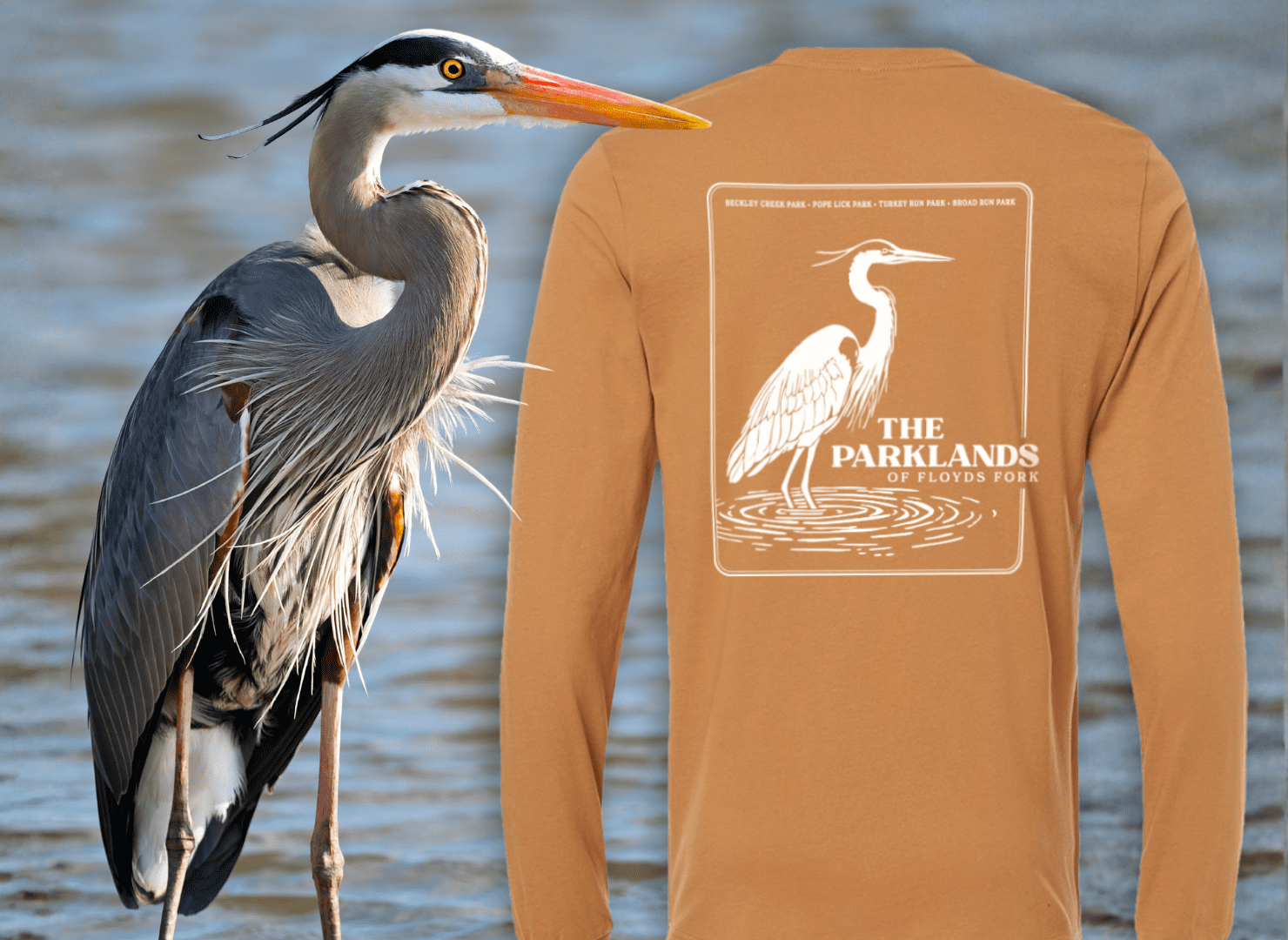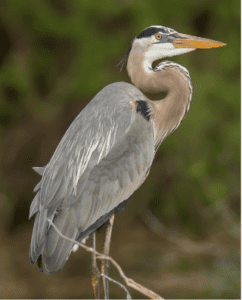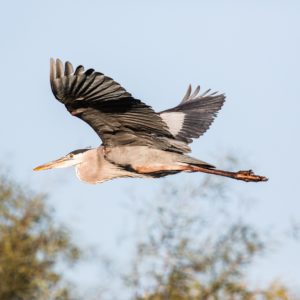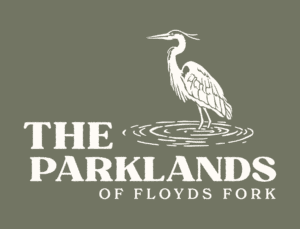
The Great Blue Heron: A Living Symbol of The Parklands’ Mission
Few sights capture the peaceful beauty of The Parklands quite like a great blue heron gliding silently over Floyds Fork. With its long wings stretched wide, elegant stride, and patient hunting style, the heron has become one of the most recognizable and beloved residents of The Parklands—and a fitting representation of our mission.
Its graceful presence is a living symbol of years of careful planning, stewardship, and habitat restoration that have allowed wildlife like the heron to thrive along the Fork.
 Meet The Fork’s Feathered Sentinel
Meet The Fork’s Feathered Sentinel
Standing up to four feet tall, with slate blue feathers and a sharp yellow bill, the great blue heron (Ardea herodias) is North America’s largest wading bird. Despite its size, it moves with remarkable grace, stalking through shallow water on long legs before striking lightning-fast to catch fish, frogs, or even small mammals.
In flight, its broad wings beat in slow, steady rhythms, and its graceful silhouette—neck tucked in an S-curve, legs trailing behind—is a familiar sight along Floyds Fork.
Herons are often seen alone, but they rely on large, connected wetland systems to survive. The Parklands’ stretches of riparian forest, marshes, and open water provide ideal feeding and nesting habitat. These natural areas filter water, reduce erosion, and support the insects, amphibians, and fish that make up the heron’s diet—demonstrating how every piece of the ecosystem plays a role in sustaining life.
Tips for Spotting a Heron
As the leaves fall and the parks grow quieter, the great blue heron remains a steadfast presence along Floyds Fork. Without summer’s dense foliage, birders have an even better chance to spot this elegant wader gliding low over the water or perched silently at the edge of a wetland.
Cool-weather birding in The Parklands offers its own kind of reward—crisp air, peaceful trails, and the chance to see the heron alongside other seasonal highlights like red-tailed hawks, kingfishers, and woodpeckers.
Here are a few tips to make the most of your heron-watching (and other bird-watching) adventures this season:
- Start near water. Creeks, ponds, and wetlands are prime hunting grounds for herons and other waterfowl. Look for movement—or stillness—along the edges of Floyds Fork.
- Go early or late. Herons are most active at dawn and dusk, when they feed and settle for the evening.
- Bring binoculars and patience. A heron’s stillness is part of its charm. Give it time, and you may see it strike, feed, or take flight.
- Dress for the season. Layers, gloves, and waterproof shoes make cool mornings more comfortable.
- Keep a list. Record your sightings—whether it’s a heron, hawk, duck, or other feathered friend—to track how the park’s birdlife changes through the year.
Style that Sustains
This month, The Parklands is celebrating the great blue heron with a collection of limited-edition shirts and sweatshirts available through our merch sale fundraiser. Each shirt features a two-sided design honoring this iconic park inhabitant.
The 2025 collection includes adult shirts in two colors, with short- and long-sleeve styles and sizes ranging from XS–4XL. (Youth shirts are available in the short-sleeve green T-shirt.) Cozy sweatshirts are also available in adult sizes XS–3XL.
This collection also includes an embroidered hat inspired by the native trees that make up The Parklands’ diverse canopy.
Proceeds from every sale go directly toward maintaining and enhancing the park’s landscapes, trails, and wildlife habitats. By making a purchase, you’re not just wearing a symbol of The Parklands—you’re helping protect the natural areas that give the heron and so many other species a place to thrive.
Your order is a simple, stylish way to show your love for the park and your commitment to preserving its natural beauty for generations to come.
This sale is going on now and ends December 4th at midnight. Don’t miss out: Place your order today!
A Beautiful and Important Part of The Parklands Story
When visitors spot a heron lifting off from the creek or standing still in the mist, it’s more than a beautiful moment—it’s a reminder that our conservation work is paying off. The heron’s steady presence tells a larger story of balance, patience, and a thriving ecosystem supported by a community that cares.
The great blue heron is a fitting ambassador for The Parklands—graceful, resilient, and deeply connected to the waterways that define the parks. By purchasing a shirt or sweatshirt (or hat!), visiting the parks, or simply pausing to appreciate these remarkable birds, you help sustain the very landscape they depend on and ensure these wetlands and forests remain healthy and peaceful for wildlife and people alike.



